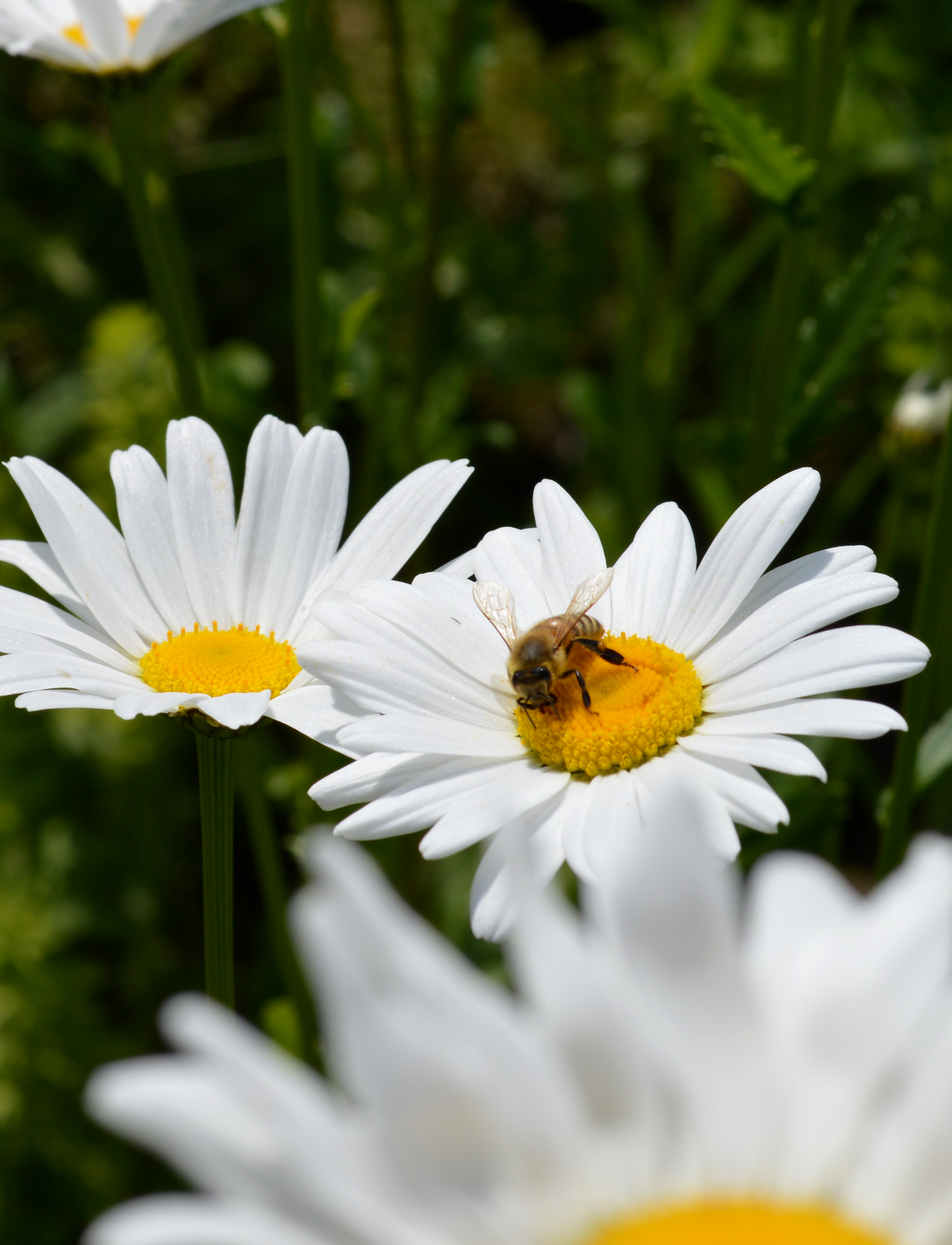2023 TOP 10 BLOG
VJEL Staff Editor: Logan Keen
Faculty Member: Laurie Beyranevand
See You Later, Pollinators: The ‘Insect Apocalypse’ Continues to Fly Under the Radar of Policymakers
The apocalypse is already underway, and it’s happening right under our noses.
Slowly but surely, insects are dwindling—both in variety and total population. A 2021 study found that the “Insect Apocalypse”—as scientists and commentators have christened the existential threat—equates to a loss of 1-2% per year in insect abundance, largely due to the usual suspects of habitat loss and climate change, but also extensive insecticide and herbicide use. Widespread pollinator losses have been identified in Europe. Great Britain has witnessed a 30-50% decline in the number of butterflies, and Germany reported a ghastly 76% reduction in the total biomass of flying insects. Though less well-studied in regions outside Europe, early research indicates the phenomenon of dwindling insect abundance exists in other regions as well.
Interestingly, not all insect species are disappearing as a result of climate change. Some are thriving, but they tend to be the sort that humans would rather avoid: namely, agricultural pests. For example, some species are expanding poleward as the climate warms, such as the brown marmorated stink bug, a species particularly fond of crops. Warming oceans have led to increased precipitation, as evidenced by the recent intensity of the monsoon and cyclone seasons in the western Indian Ocean. That increase in rain created the perfect breeding conditions for locusts to breed, hatch, grow, and eventually destroy massive quantities of grain in Ethiopia in 2019 and 2020.
Moving forward, humans must grapple with the doubly detrimental impacts of climate change and habitat destruction on insect biodiversity: first, the decline in beneficial insect populations, and second, the expansion of harmful insect populations.
***
The class Insecta—a marvelously diverse group of creepy crawlers (and fliers) that includes bees, ants, beetles, butterflies, and flies—is currently comprised of about 1 million identified species (not including the millions more suspected unidentified), representing the most successful class in the animal kingdom, evolutionarily speaking.
Ask a passerby the first thing that comes to mind when they hear the word “insect,” and they’ll probably have a negative reaction. Fair enough, given humanity’s long familiarity with insects as both carriers of disease and ravagers of crops. Most humans possess a certain pathological and deep-seated aversion to insects, likely a result of thousands of generations of natural selection. The aversion, characterized by researchers as an anxious trait more like disgust than fear, is comparable to our physical reaction to feces and rotting food; scientists believe the traits developed similarly because insects, feces, and rotting food all pose the danger of making us sick. Over time, humans learned to be repulsed by insects.
Many insects, however, provide remarkable benefits to humanity, including pollinators and predators of pest insects. Flying insects are key pollinators of 87 of the world’s major food crops, including fruits, spices, and—this cannot be overstated—cacao, the vital ingredient in chocolate. The negative effects of climate change on pollinators are well-studied. Without stable populations of pollinators, crop yields inevitably suffer. While feasible substitutes for pollination exist (indeed, several nations have already implemented the practice of hand-pollination), these practices are time-consuming and costly.
One particularly grisly and lesser-known benefit that insects provide to humans comes courtesy of the humble blow fly. Female blow flies land on a dead body within minutes of death, taste it to ensure it’s good food for their larvae, and immediately lay hundreds of eggs—known as maggots. This process kick-starts decomposition. Beginning in the 1300s, ingenious forensic entomologists learned the life cycles of blow flies found in their region and used this information to determine how long an individual had been dead; the same techniques are used today.
Climate change, unfortunately, may play an unexpected and catastrophic role in forensic entomology moving forward because it threatens the accuracy of PMI (post mortem interval) predictions. As the planet warms, the home range of certain tropical species of blow fly will continue to expand poleward. Additionally, the actual lifecycles of each species will change— meaning that, practically speaking, a time of death may be grossly misestimated based on either the reliance on calculations made using an outdated lifecycle or the misidentification of the species of maggots on the body. As a result, forensic investigators might hypothetically come to suspect of murder someone totally innocent but present at the crime scene at 5:45PM, while simultaneously eliminating the real culprit as a suspect, who in fact did the deed at 2:15AM—all because climate change is changing the way insects breed and migrate.
The bottom line? Despite our evolutionary predisposition to be repulsed by them, insects provide untold benefits to humans, including pollinating the crops that make our food, eliminating pesky agricultural pests, and indeed, helping us solve murders. So: what can be done to prevent their ongoing disappearance?
***
As the old saying goes, knowledge is power; the aphorism rings truest when it concerns scientific knowledge. With better data, decision-makers can make better decisions to protect the environment. Consequently, one recommendation to address the Insect Apocalypse is the need for more data on insect abundance, particularly in lesser-studied and more biodiversity-rich regions of the globe.
While studies on insect populations are becoming more pervasive, these studies have overwhelmingly examined biodiversity in temperate climates, e.g., Great Britain and Germany. Meanwhile, scholars estimate that a majority of the world’s insect species—including undiscovered species, estimated to comprise 80% of total insect species—live in little-studied tropical regions. The upshot is that despite the discouraging picture painted by observation of dwindling insect abundance in temperate regions, the most destructive population collapses of the Insect Apocalypse are probably occurring under the radar.
One ambitious 2022 study, for example, analyzed 20,000 insect species to better understand the overlapping effects of the “twin conditions” of habitat loss and climate change on insect abundance. Scientists concluded that insect decline was worst where both factors overlapped, because the largest decline in any of the biomes studied (63% reduction) was found in “climate-stressed agricultural areas” with the greatest amount of natural habitat removed. By contrast, the researchers observed only a 7% decline in insect abundance where three quarters of the nearby natural habitat had been preserved.
This knowledge is only powerful though if law- and policymakers are apt to heed it. There is already a substantial body of knowledge indicating the harmful, indiscriminate effects of insecticides and herbicides on insect populations, including those insects that are agriculturally harmless.
The second general recommendation, then, is addressed to law- and policymakers: we must carefully consider the impact of every government action or policy on insect abundance. Specific actions the United States might take might include agreeing to list certain insects under the
Endangered Species Act, especially pollinators; further, the US could place trade restrictions on agricultural products coming from places with high deforestation rates, like Brazil and Indonesia.
Most importantly, though, the United State should immediately discontinue the use of neonicotinoids, a class of chemicals originally developed by Nazi scientists during World War II which are especially toxic and environmentally pervasive. Not only are these insecticides highly lethal to bees and other insects, but they also have more sinister effects on navigation, taste sensitivity, and other abilities that are key to foraging and thus hive productivity. Additionally, neonicotinoids, or “neonics,” have been found residually in waterways and soil, having noted effects on birds and aquatic invertebrates. The EPA has issued an interim decision on neonicotinoids, but progress has stalled. Recently, the agency banned the use of chlorpyrifos on food sold in the U.S. because of chlorpyrifos indisputable effects on human health, especially to children; there should be similar urgency to proactively protect the nation from the unseen dangers of vanishing insect populations. Several states, including California, New Jersey, and Maine, have enacted laws restricting the use of neonics to various degrees, but an issue of such grave importance ought not be left to the states to determine individually, especially considering the innately migratory nature of both climate change and insect populations. Congress should therefore prioritize passing the amendment to the Federal Insecticide, Fungicide, and Rodenticide Act (FIFRA) introduced last year by Senator Cory Booker—known as the Protect America’s Children from Toxic Pesticides Act—which would include an immediate ban on the most harmful pesticides, including neonicotinoids.
For its part, the European Union has already passed legislation to restrict some of the more harmful pesticides, including the three most common neonicotinoids (clothianidin, imidacloprid, and thiamethoxam) in 2018. Though neonics are ruthlessly effective at killing insects, they do so indiscriminately. Studies suggest that non-chemical alternatives to neonicotinoids do exist; these alternatives should be studied further.
***
In sum: there is an ongoing, drastic reduction in total insect abundance, with insects declining steadily over the past half-century at a rate of 1-2% percent a year. This total decline is contrasted by a simultaneous increase in the home ranges and populations of certain agriculturally destructive insects. This will likely be devastating for humans, both in obvious ways like reducing the pollination of crops, and less obvious ways: for example, by altering the way crime scene forensics are done. The drivers of the Insect Apocalypse are primarily the “twin conditions” of climate change and habitat loss—two sides of the same coin—but also include other human-induced variables like pesticide use. As for solutions, humanity must not only collect more data on understudied regions and species but also more thoroughly consider the data we already possess when making policy; one piece of low-hanging fruit would be an EPA ban on neonicotinoids.


